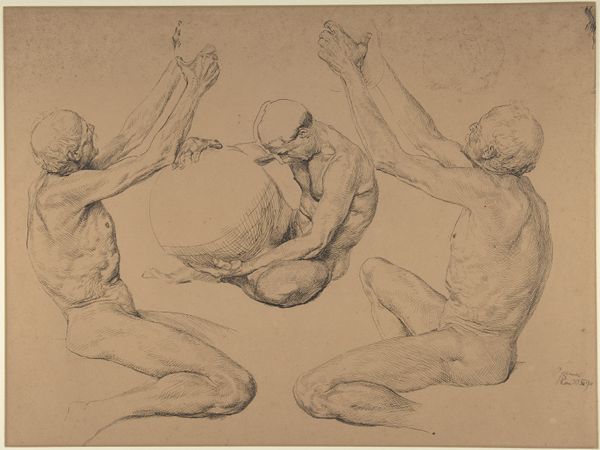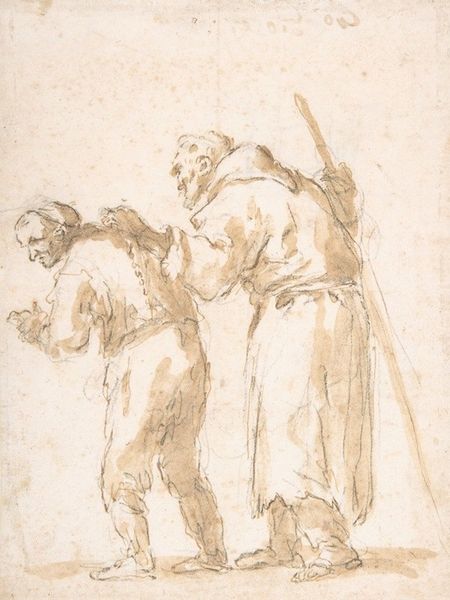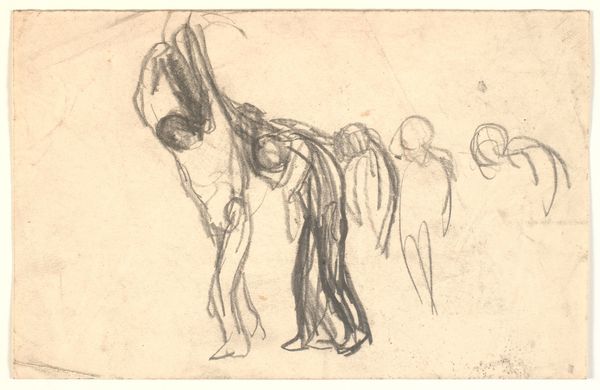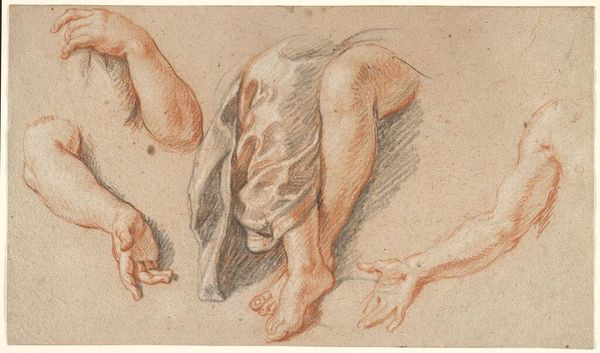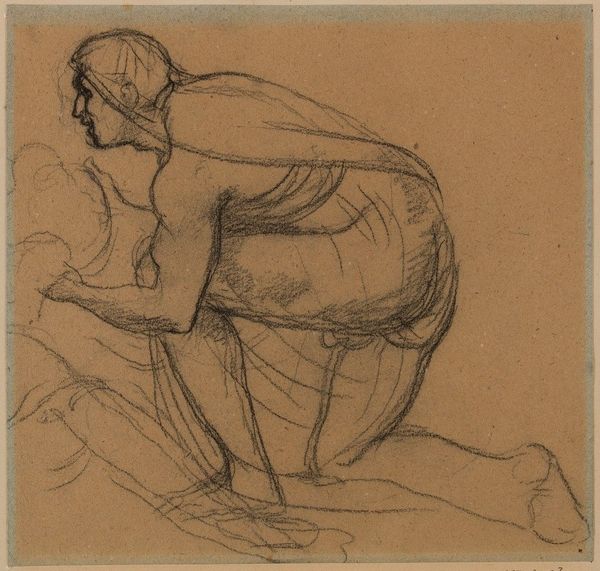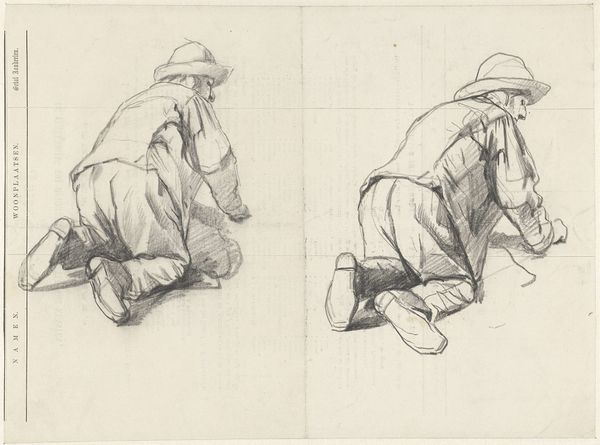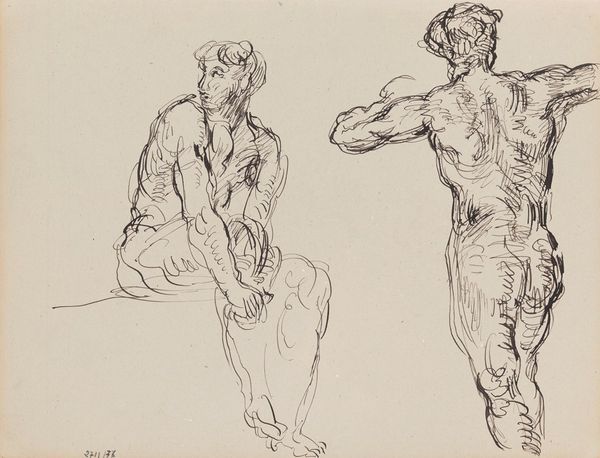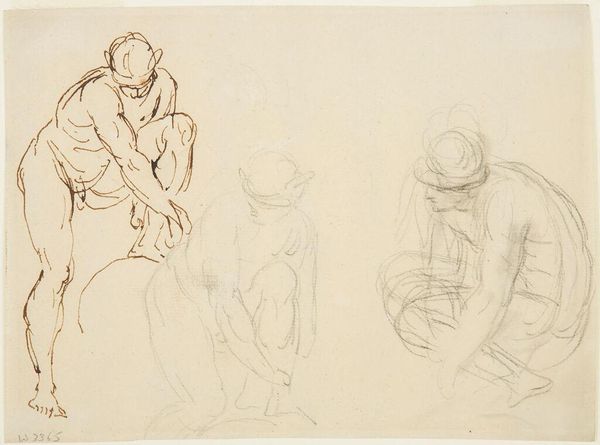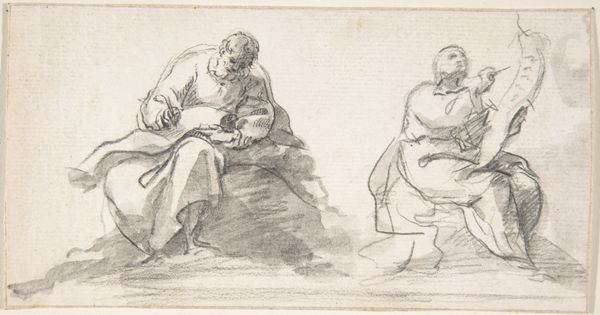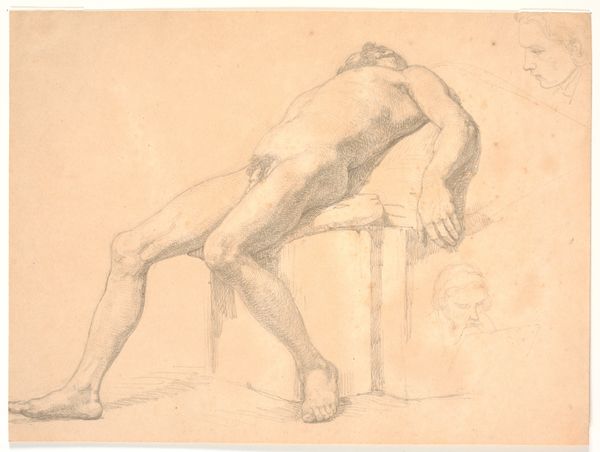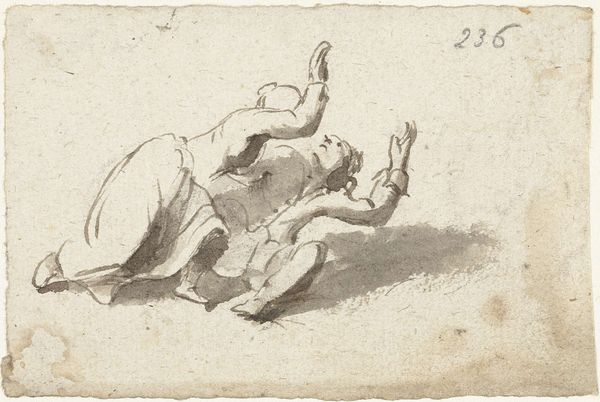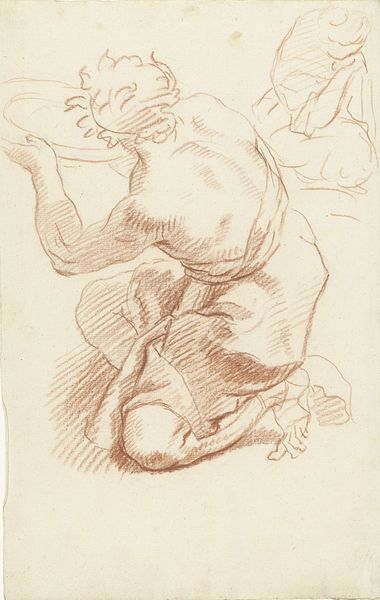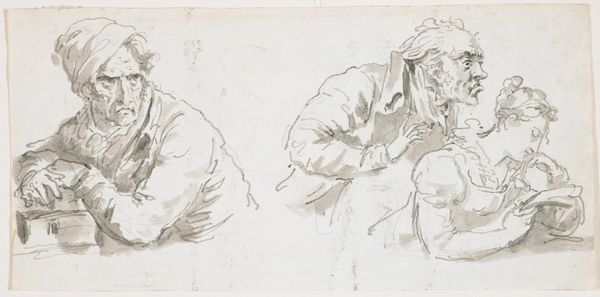
drawing, ink
#
portrait
#
drawing
#
ink drawing
#
pencil sketch
#
figuration
#
ink
Copyright: Public Domain: Artvee
Curator: This drawing, simply titled "Two Kneeling Figures," is attributed to Benjamin West. It's rendered in ink, almost a sepia tone, presenting two figures in a posture of supplication. What's your immediate reaction? Editor: A visceral sense of despair. The hunched postures, the faces buried… it speaks volumes about submission and perhaps grief. There's a real rawness in the lines, too. Curator: Indeed. The rapid, almost frenzied, lines contribute to that sense of urgency and emotion. West, although quite successful within the Royal Academy system, often grappled with representing intense emotional states within established academic conventions. I think this work captures some of those tensions. Editor: Absolutely. I wonder about the broader social context, though. What narratives of power, religion, or even political oppression are we engaging with here? Were these studies perhaps connected to representations of colonial subjects, begging for reprieve or justice from a dominant colonial figure? Curator: That’s a fascinating lens to view it through. It’s difficult to pin down a specific narrative without concrete documentation; we lack identifying details in both the subjects. But considering the era, the drawing invites intersectional interpretations concerning faith, humanity, and justice in colonial contexts, absolutely. And also the dynamics of patronage and power between artist and sitter if these were intended as portraits. Editor: And the implications of choosing to depict these figures from behind, partially obscured… What’s revealed and what’s concealed speaks volumes about the intentions of the artist and what kind of social and institutional constraints that they're faced with. It feels loaded with social commentary. Curator: The ambiguity could also serve to heighten their universality, allowing the viewer to project their own understanding of sorrow and subjugation. And while West certainly achieved notoriety in Britain’s Royal Academy, which itself functioned with its own set of dynamics, West's early American roots undoubtedly shaped his world-view. Editor: Thank you. Considering West's unique position straddling the US and the United Kingdom and the cultural and political contexts of his artwork provides important social context and awareness of the role artistic constraints played during this time. Curator: Precisely. Considering social contexts enriches our appreciation. Thank you for shedding further light onto it!
Comments
No comments
Be the first to comment and join the conversation on the ultimate creative platform.
